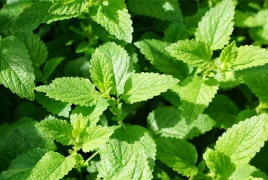Armenia’s folk remedies are getting a new look: The Smithsonian May 24, 2017 - 11:34 AMT PanARMENIAN.Net - The Smithsonian Center for Folklife and Cultural Heritage has published an article about the folk remedies that Armenians have been using for ages and which have come to are get a new look Authored by Karine Vann, the feature suggests that the herbs of the Armenian highland were especially well-reputed among ancient writers, like the Greek physician Galen or the famed Islamic philosopher Ibn Sina, who wrote on the healing properties of Armenia’s clay in his treatise “The Canon of Medicine.” The article then goes on to detail the scientific study of medicine in Armenian monasteries back in ancient times. “The most useful remaining books on pharmacology date from the medieval period. In the twelfth century, the father of Armenian medicine, Mkhitar Heratsi, authored his pivotal book on fevers, in which he traversed marsh-ridden countryside to study malaria, fusing folk medicine of the time with the medical advances of the scholarly and monastic world. Later in the fifteenth century, Amirdovlat Amasiatsi wrote “Useless for the Ignorant”, a famous encyclopedia of 3,500 Armenian plants and herbs that he translated into five languages: Persian, Arabic, Latin, Greek and Armenian, to ensure its use by laymen and professionals alike,” the publication says. Amasiatsi’s incredibly rich text advises on the uses of native Armenian plants in such depth that his writings continue to influence modern pharmacists, like Armen Sahakyan, a pharmacologist and botanical scholar who has been working at the Matenadaran Museum for the last several decades. A trained medical doctor ordained a deacon in 1997, Sahakyan has dedicated his life to the maintenance of Armenia’s sacred botanical traditions. Sahakyan has Been collecting ingredients from recipes in old manuscripts, like those of Heratsi’s and Amasiatsi’s, and recreated them for modern use. He feels that the country is finally beginning to rediscover its heritage following seventy years of Soviet intervention. Sahakyan’s efforts are contrasted by those of Nairian, a company founded in 2014 to produce all-natural skincare out of essential oils made from Armenia’s indigenous herbs and plants. “We don’t actually recreate any original recipes from the ancient manuscripts, but instead we create our own,” says Anahit Markosian, who leads Nairian’s research and development. There is a village saying in Armenia: nature is very smart, since it has a remedy for every pain. “By continuing the tradition of natural healing in the region—whether by grandmothers or by pharmacists—Armenians in the twenty-first century are ensuring that it, like the land itself, is here to stay,” the article concludes. The number of state universities will be reduced from 23 to 8 by 2030, Minister of Education, Science, Culture and Sport Zhanna Andreasyan has said. From September 21 to November 11, a total of 2,820 Russians registered at a place of residence in Armenia, the police has said. The situation on the contact line between Karabakh and Azerbaijan was relatively stable overnight, the Defense Army says. Defense Minister Suren Papikyan has visited the southern Armenian province of Syunik, the Defense Ministry reported on March 18. Partner news |